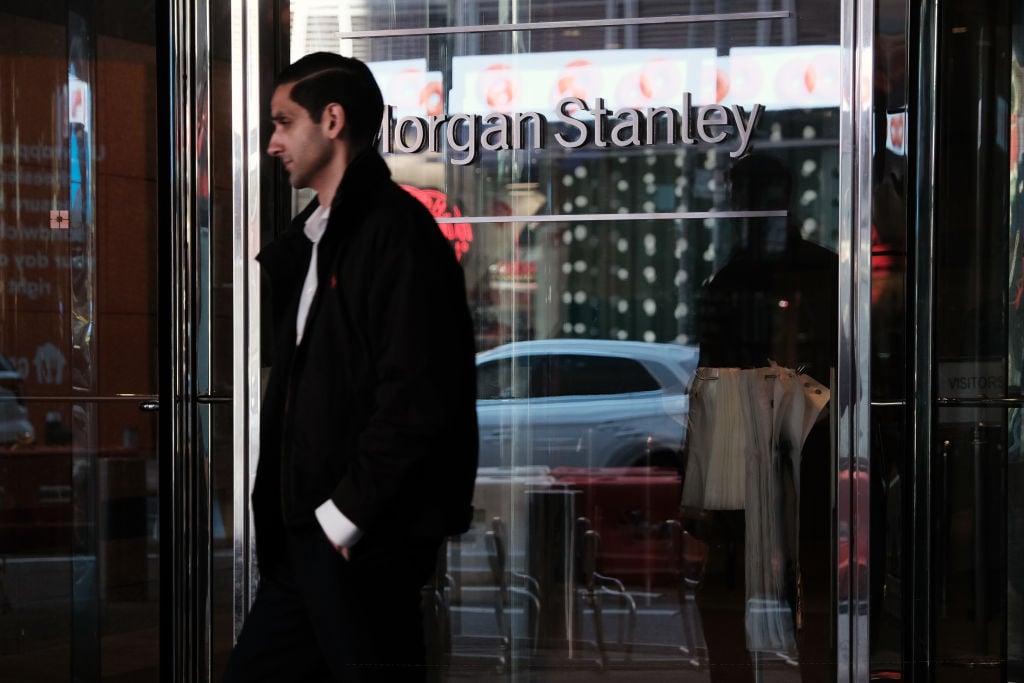Morgan Stanley pessimistic on Wall Street. The target on the S&P 500
Morgan Stanley strategists led by Michael Wilson are definitely bearish on the S&P 500 index.
In their view, the US equity benchmark could capitulate up to the low of 3,000 points in the first half of 2023slipping by 26% compared to current values.
“Above all, this is the consensus at the moment”report from Morgan Stanley, with strategists noting the attitude of active institutional and retail investors, which are bullish to a record high in more than a yearin a context in which the recent macroeconomic data from the US front are not exactly auspicious.
And Bloomberg article points out that, according to the experts led by Wilson, the latest indicators released in the United States have presented the scenario of an economy capable, probably, of dodging the recession: a positive factor in itself which however nullifies the possibility that the Federal Reserve led by Jerome Powell lay down its weapons soon against the growth of inflation.
Alert Morgan Stanley on the S&P 500. The death zone chart
It is not for nothing that Wall Street itself reacted to the publication of the data (especially those relating to US inflation), betting on a more hawkish Fed, according to the note from Morgan Stanley, in a situation in which US shares, based on the risk premium parameter, they have never been this expensive since 2007.
For Morgan Stanley the risk premium has effectively entered a level known as “death zone”which makes the risk-reward ratio decidedly uncomforting, especially if one considers that the Fed is decidedly far from completing its roundup of rate hikes on fed funds, and while estimates on corporate America’s profits remain too high, according to Wilson, between 10% and 20%.

It should be noted that Mike Wilson is known to have confirmed himself ranked first in last year’s Institutional Investors rankinghaving predicted the collapse of stocks in 2022, as it has.
READ ALSO Wall Street between Fed and macro data: eToro’s point
Wilson talks about a bear market rally – bear rally – which has turned into “a speculative feverbased on a pause or a Fed pivot, which is not showing up.”
What other strategists are saying
Morgan Stanley is definitely not alone in its outlook. Pessimistic is also JP Morgan’s strategist Marko Kolanovic, who warned a few days ago that the Fed has been misunderstood.
Bank of America strategists led by Michael Hartnett also warned last week that the US recession, which they believe will come, it will weigh down Wall Street in the second half of this year.
He also has his say Norman Villamin, Chief Investment Officer Wealth Management di UBP.
In the note “UBP: recession or soft landing? The economies of the USA, the EU and China at the crossroads”, Villamin points out that “Equity and bond markets continued to rally in January thanks to falling energy prices, the reopening of China and the hope of a future rate cut by the Fedwhich has pushed all asset classes to optimism”.
However, as other strategists report, “optimism collides with the growing divergence between the expectations implicit in the markets, Fed communications and the evolution of fundamentals, particularly in the United States“.
Villamain highlighted the futures markets trend, “which suggest that the Fed will start cutting rates in late 2023 and more aggressively in 2024.”.
A good news? Not really, since “a cycle of rate cuts of this kind it has preceded every recession since 1990. In contrast, a much more modest rate-cutting cycle took place during the soft landings of the 1990s.
That said, according to the investment director of UBP’s Wealth Management division, “in the US stock and credit markets, the still positive earnings growth forecast for 2023 and credit spreads approaching the pre-pandemic averages of 2017-19 are consistent with a soft landing of the US economy rather than the recessionary rate-cutting cycle predicted by Fed Funds futures.
The result is that “These inconsistencies across US asset markets suggest investors should expect volatility in US assets in the coming months as the likelihood of a recession or soft landing becomes clearer.”
And this according to UBP is an element that “drives our allocation to hedge funds, that should benefit from this repricing across assets.”
For their part Citigroup strategists led by Robert Buckland reported yesterday that they are not betting on increases in the MSCI All Country World global equity index, given that the stock is already traveling around the highest point of the target they set.
Citigroup also added by prefer oil stocks over technology stocks, after the leap in the latter marked since the beginning of 2023.
